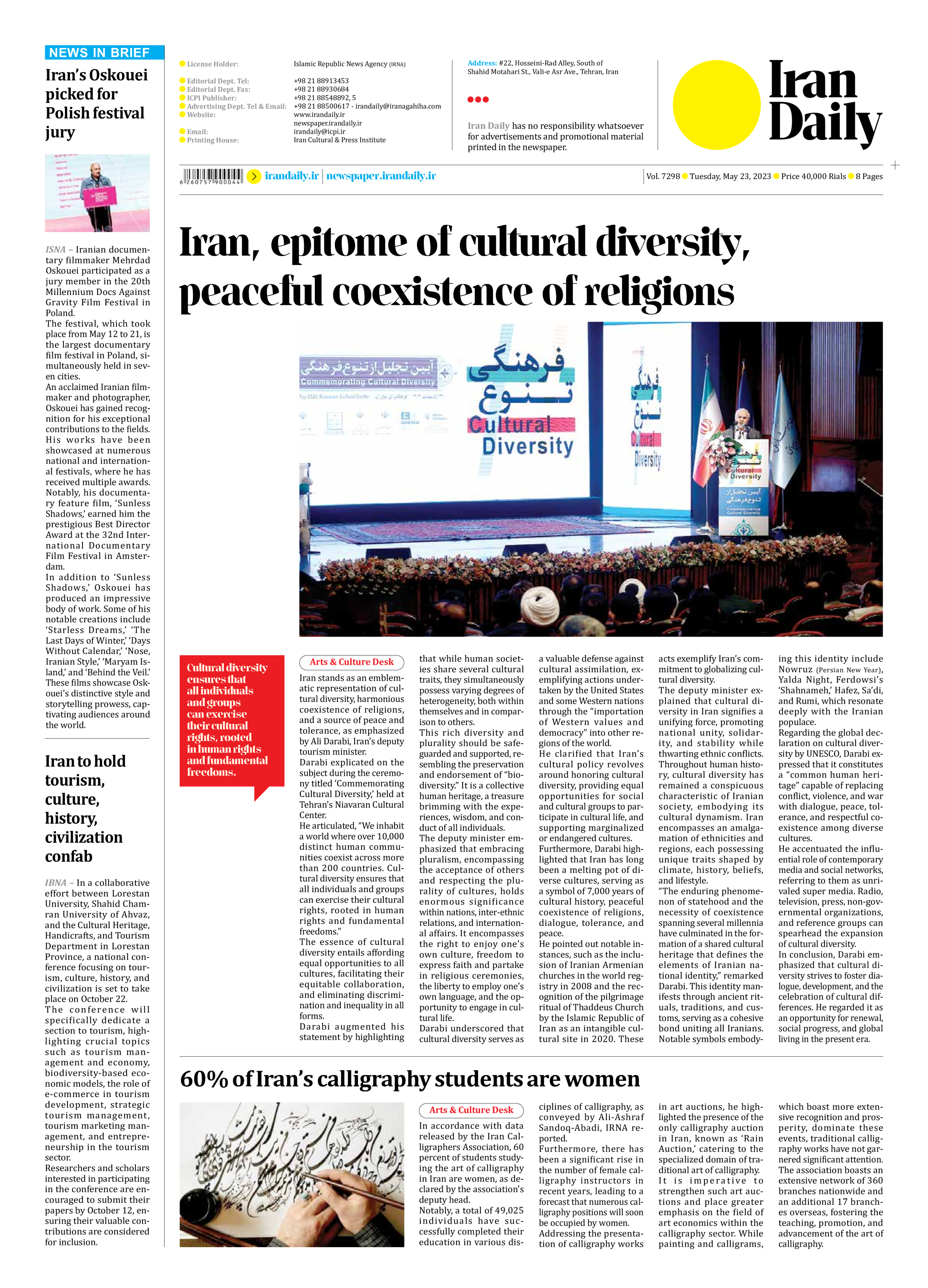
Iran, epitome of cultural diversity, peaceful coexistence of religions
Iran stands as an emblematic representation of cultural diversity, harmonious coexistence of religions, and a source of peace and tolerance, as emphasized by Ali Darabi, Iran’s deputy tourism minister.
Darabi explicated on the subject during the ceremony titled ‘Commemorating Cultural Diversity,’ held at Tehran’s Niavaran Cultural Center.
He articulated, “We inhabit a world where over 10,000 distinct human communities coexist across more than 200 countries. Cultural diversity ensures that all individuals and groups can exercise their cultural rights, rooted in human rights and fundamental freedoms.”
The essence of cultural diversity entails affording equal opportunities to all cultures, facilitating their equitable collaboration, and eliminating discrimination and inequality in all forms.
Darabi augmented his statement by highlighting that while human societies share several cultural traits, they simultaneously possess varying degrees of heterogeneity, both within themselves and in comparison to others.
This rich diversity and plurality should be safeguarded and supported, resembling the preservation and endorsement of “biodiversity.” It is a collective human heritage, a treasure brimming with the experiences, wisdom, and conduct of all individuals.
The deputy minister emphasized that embracing pluralism, encompassing the acceptance of others and respecting the plurality of cultures, holds enormous significance within nations, inter-ethnic relations, and international affairs. It encompasses the right to enjoy one’s own culture, freedom to express faith and partake in religious ceremonies, the liberty to employ one’s own language, and the opportunity to engage in cultural life.
Darabi underscored that cultural diversity serves as a valuable defense against cultural assimilation, exemplifying actions undertaken by the United States and some Western nations through the “importation of Western values and democracy” into other regions of the world.
He clarified that Iran’s cultural policy revolves around honoring cultural diversity, providing equal opportunities for social and cultural groups to participate in cultural life, and supporting marginalized or endangered cultures.
Furthermore, Darabi highlighted that Iran has long been a melting pot of diverse cultures, serving as a symbol of 7,000 years of cultural history, peaceful coexistence of religions, dialogue, tolerance, and peace.
He pointed out notable instances, such as the inclusion of Iranian Armenian churches in the world registry in 2008 and the recognition of the pilgrimage ritual of Thaddeus Church by the Islamic Republic of Iran as an intangible cultural site in 2020. These acts exemplify Iran’s commitment to globalizing cultural diversity.
The deputy minister explained that cultural diversity in Iran signifies a unifying force, promoting national unity, solidarity, and stability while thwarting ethnic conflicts. Throughout human history, cultural diversity has remained a conspicuous characteristic of Iranian society, embodying its cultural dynamism. Iran encompasses an amalgamation of ethnicities and regions, each possessing unique traits shaped by climate, history, beliefs, and lifestyle.
“The enduring phenomenon of statehood and the necessity of coexistence spanning several millennia have culminated in the formation of a shared cultural heritage that defines the elements of Iranian national identity,” remarked Darabi. This identity manifests through ancient rituals, traditions, and customs, serving as a cohesive bond uniting all Iranians. Notable symbols embodying this identity include Nowruz (Persian New Year), Yalda Night, Ferdowsi’s ‘Shahnameh,’ Hafez, Sa’di, and Rumi, which resonate deeply with the Iranian populace.
Regarding the global declaration on cultural diversity by UNESCO, Darabi expressed that it constitutes a “common human heritage” capable of replacing conflict, violence, and war with dialogue, peace, tolerance, and respectful coexistence among diverse cultures.
He accentuated the influential role of contemporary media and social networks, referring to them as unrivaled super media. Radio, television, press, non-governmental organizations, and reference groups can spearhead the expansion of cultural diversity.
In conclusion, Darabi emphasized that cultural diversity strives to foster dialogue, development, and the celebration of cultural differences. He regarded it as an opportunity for renewal, social progress, and global living in the present era.







